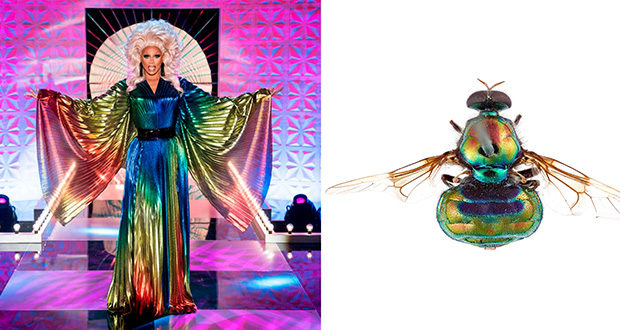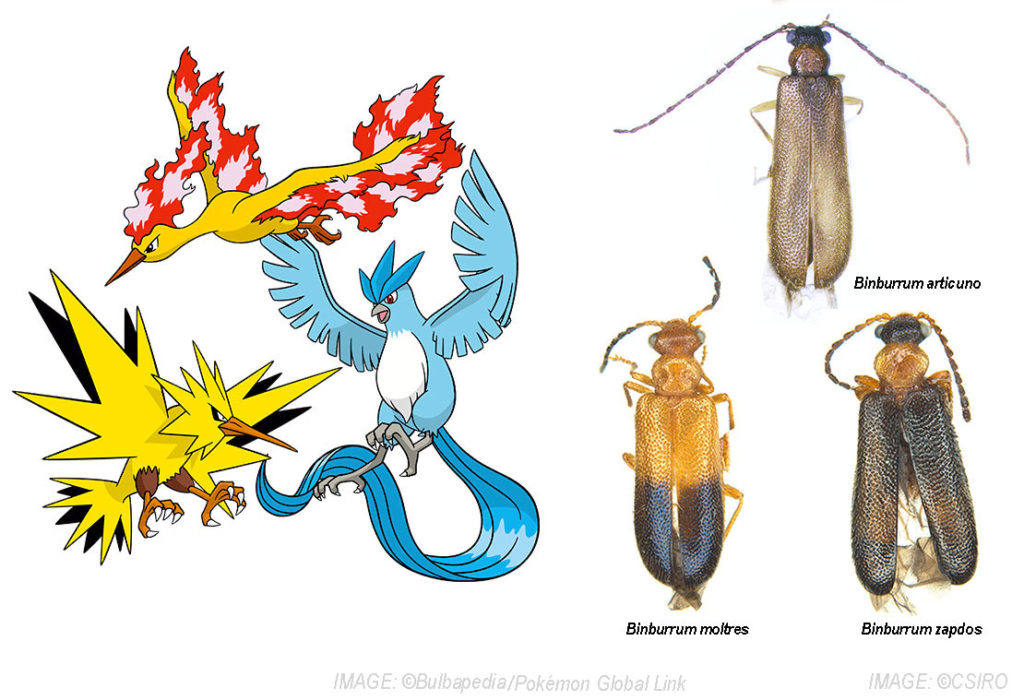You’d be forgiven for thinking that US drag-queen and actor RuPaul and video game Pokémon are far removed from the serious work of CSIRO scientists, but that’s not entirely the case.
In fact, of the 150 new species named in the last year by the CSIRO, the abovementioned cultural icons have lent their names to a new soldier fly and three kinds of rare beetles respectively.
Opaluma rupaul forms part of the new Australian genus Opaluma (from the Latin for opal and thorn) and was named to describe the iridescent colours of flies in this group and the distinctive thorn found on their abdomens.
The Binburrum articuno, Binburrum zapdos and Binburrum moltres beetles are named after three hard-to-find Pokémon: Articuno, Zapdos and Moltres.
National Research Collections Australia postdoctoral research fellow Dr Bryan Lessard said unusual names like these can help attract the attention of citizen scientists and policy makers to include these species in bushfire recovery efforts.
“Many of the 13 new soldier flies I named are from areas impacted by the Black Summer bushfires,” Lessard said.
“Two of these, Opaluma opulens and Antissella puprasina, have now been recognised as endangered species under the International Union for Conservation of Nature Red List and are known only from Lamington National Park in Queensland, an area that was significantly burned in the bushfires.
“Soldier flies are valuable in the ecosystem. The larvae recycle nutrients from dead plants and animals, while adults are pollinators of some Australian plants.”
Lessard added that describing and naming Australia’s biodiversity is also vital in protecting our biosecurity.
“This year we identified an exotic species of mosquito, Culex tritaeniorhynchus, that can transmit Japanese encephalitis virus and was detected in Australia for the first time. It was initially mistaken for an undescribed native species,” he said.
Among a host of more traditional names, the list of new species also includes Demyrsus digmon, a new cycad-boring weevil named after the fictional insectoid Digmon from the Japanese anime television series Digimon Adventure. Digmon has the ability to drill and manipulate the earth, much like the weevil’s ability to bore into the hard trunks of cycads.
A quick internet search reveals a number of unusual species names given out over the years, including the following examples highlighted by Australian Geographic back in 2014:
- Pharlapiscus is an Australian sea horse named after the champion racehorse Phar Lap.
- Gelae baen was named after the bean shaped lolly it resembles. The Gelae genus also includes Gelae rol, Gelae fish, Gelae belae, and Galae donut.
- Spongiforma squarepantsii is a species of spongy mushroom found in Malaysia, and was named after the popular cartoon character.
- Parastratiosphecomyia stratiosphecomyioides, contains no clever meaning; this small Indian fly simply holds the title for longest scientific name of any species.
Email [email protected]
 Campus Review The latest in higher education news
Campus Review The latest in higher education news


